How to optimize Customer Lifetime Value and the most effective tools for marketers
 Chris Baldwin
Chris Baldwin
May 19, 2020
 Chris Baldwin
Chris Baldwin
May 19, 2020
 Chris Baldwin
Chris Baldwin
May 19, 2020
 Chris Baldwin
Chris Baldwin
May 19, 2020
Customer Lifetime Value—a cornerstone metric for success and comfortably lightweight to define—is often overshadowed by growth and acquisition strategies.
Customer Lifetime Value (CLV), as explained in detail in an earlier blog post, is important for defining both the revenue generated by a customer in a single transaction and the compound value driven by the customer over the lifetime engagement with the business.
What Does It Take To Optimize Your Customer Lifetime Value (CLV)?
Final Takeaways
Optimizing your CLV, therefore, becomes as much about customer retention as it is about customer acquisition—a metric based on value-driven customer experiences.
Luckily for you, there are endless ways to optimize your CLV. You can tweak your CLV-optimization strategies to identify with your brand’s messaging, vision, and goals. Optimizing the customer lifetime value is a personalized effort, and brands that get it right are the ones who manage to be personal and drive relevance.
Now, you might have a ton of strategies on the drawing board but are wondering if there are tools out there that can effectively put your ideas around customer lifetime value into play. Don’t worry, there are many tools out there that can help you—and at Insider we’ve got the state of the art, AI-powered technology to help you achieve just that.
Since there are infinite ways of optimizing your CLV, you can be overwhelmed when starting out. Even though the possibilities are endless, they revolve around key aspects such as customer experience, customer retention, re-targeting, simplified product discovery, feedback and customer loyalty All you need to ensure is that your CLV strategies focus on these aspects.
When evaluating tools to help you in your quest to optimize your CLV, you need to ensure they focus on two key components:
Let’s dive right into how you can optimize your CLV.
Personalization and relevance are at the heart of engagement today, meaning that users are always looking for hyper-personalized and relevant information from brands.
In order for brands to meet this challenge, it becomes vital that they are able to segment users based on various attributes such as user-behavior, likelihood to purchase, discount affinity and so on.
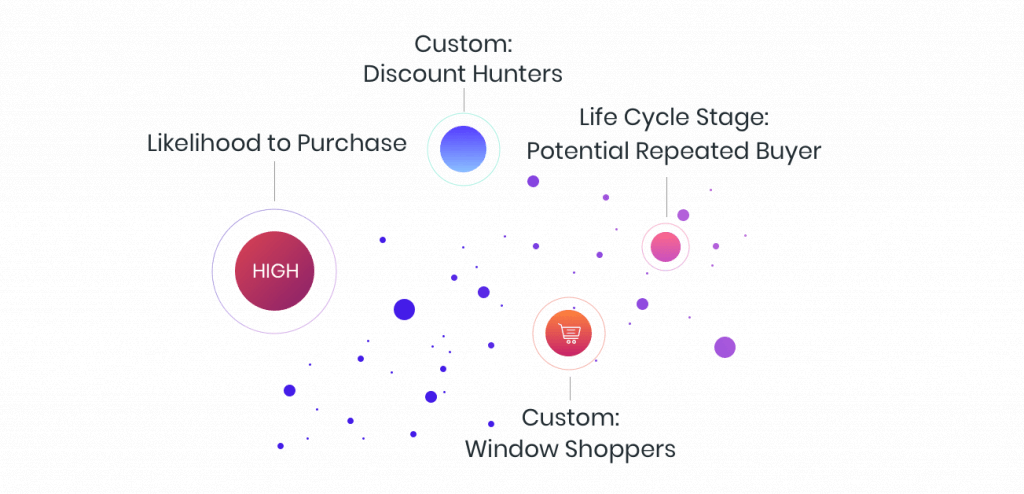
Being able to segment your users also means that you can reach out to them with highly personalized and relevant messaging. Segmentation also enables you to find out users who are at risk of churning. With the right content, you can bring them back to engage with your brand.
At the heart of Insider’s Growth Management Platform lies the predictive segmentation technology backed by AI and Machine Learning.
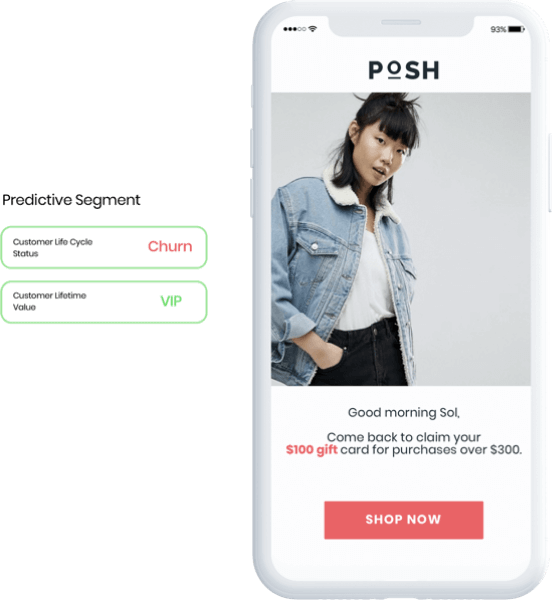
Using predictive segments, you can hyper-personalize your messaging based on the user segment and increase your chances of engagement and conversion. For example, you can reach out to a user who’s CLV has been identified as a VIP but is at risk of churning; with an exclusive $100 gift card for purchases over $300—a retention strategy that will further enhance the CLV of your customer.
People won’t buy from you if you make it difficult for them. One of the leading causes for user drop-offs is ineffective product discovery. When users visit your website, they look for the quickest path to find a product.
This is where you need to draw a balance between promoting products that you think are trending and catering to your users’ need to find the product of their choice. According to studies, an improved product discovery solution has been shown to increase digital sales by 33%. (source: Net Imperative)
As the mobile-first trend continues to drive engagement, more and more users are looking for brands that deliver a seamless mobile experience. Adopting a strategy that allows users to purchase on the mobile is essential to capturing and retaining this segment of the market.
Maven is an AI-powered product discovery solution by Insider that asks the right questions and quickly helps users find what they are looking for. When you know what product categories your customers are interested in, how much they are willing to pay and their previous search-patterns you can design a truly relevant and personalized experience for your users.
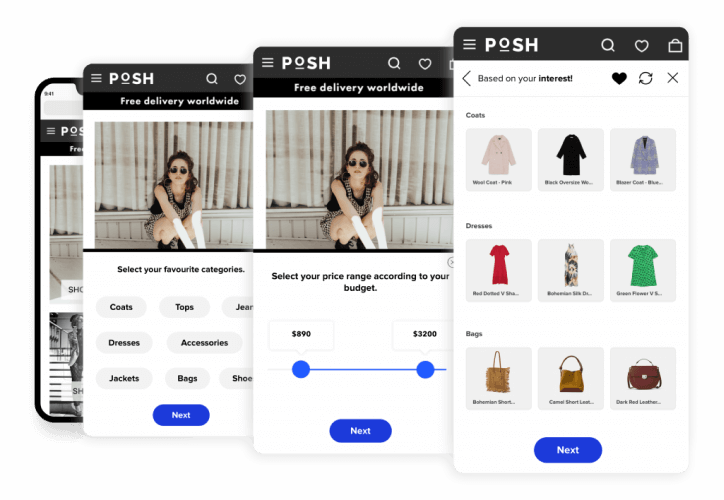
According to a survey by Accenture, 48% of users will abandon a website and make a purchase elsewhere if the experience is a poor one; making it all the more imperative that brands do everything in their power to retain visitors.
Your potential customers today are dynamic, navigating at least six touchpoints on average before making a purchase. Customers today are also present on multiple devices and across channels, giving marketers more options to reach out to them, but can also make the process confusing and overwhelming.
It all starts with onboarding—and it’s critical that you make the onboarding count. Poor onboarding has been shown to result in 23% of users churning.
When designing customer journeys it is also important to customize the process based on the user segment, the channel etc. with Insider’s Architect, a unique AI-powered customer journey builder, you can do all this and much more.
Designing a unique and relevant customer journey requires being able to engage the right user, with the right message, at the right time and on the right channel. Wrap your customers in a sense of warmth right from the start and build trust and value with the right kind of engagement.
Architect will enable you to reach out to customers across channels, it also comes packed with powerful predictive segments that will enable you to personalize the journey and the messaging for different customer segments such as most likely to purchase, likely to churn, high discount affinity and customer lifecycle status.
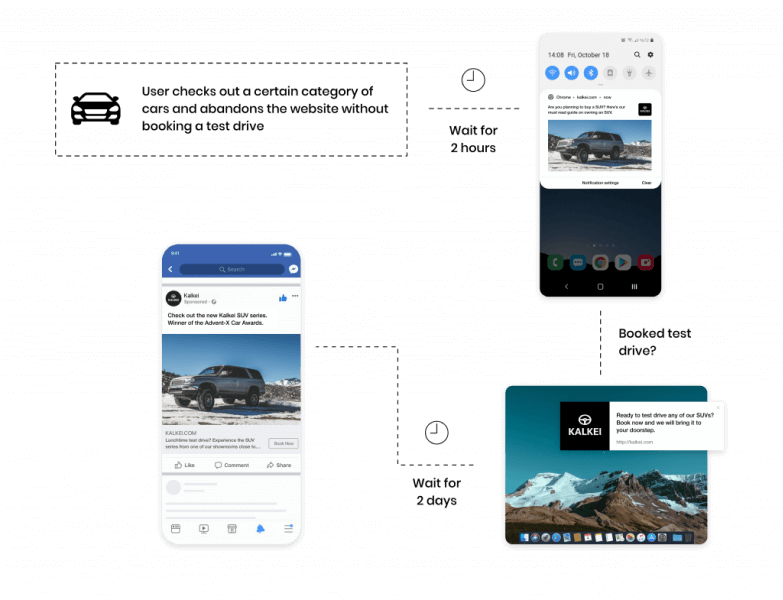
Businesses need to improve their Average Order Value (AOV) to drive growth and sales—customers need to be motivated to add more products to their carts. But to make this happen, brands need to present users with relevant recommendations.
Every customer is unique, which means that generic recommendations such as top trending or most purchased just don’t cut it. You are going to have to go deeper and start delivering contextualized recommendations to grab their attention.
Smart Recommender by Insider is an AI-powered contextualized recommendation engine that delivers content and product recommendations across the desktop web, mobile web and email.
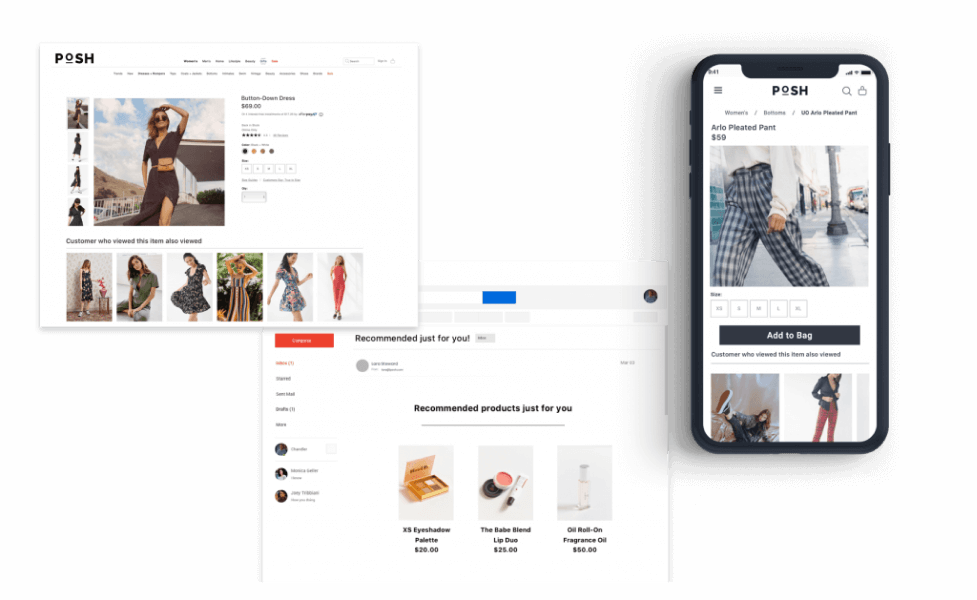
Bringing a user to your website is one thing, but getting them to convert and continue purchasing from your site is key. Along the lifecycle of the customer, you also want to improve the AOV from your customers, cross-sell and up-sell relevant products from your catalogue—Smart Recommender makes all of this possible by combining the best of AI and Machine Learning to facilitate real-time data exchange and optimize the recommendations based on attributes such as discount price, category, specific keywords, product price, product segment, product stock and more.
Cart abandonment is a plague facing all marketers—every year cart abandonment results in a lost potential of $4.6 trillion for eCommerce sales. Getting users to come back to their carts and complete their purchase is often the biggest challenge.
With Insider’s Web Push Suite, you can create and deliver highly engaging and personalized web push notifications to your users. A great web push notification strategy can help you address concerns such as abandoned carts, user drop-offs due to product unavailability etc.
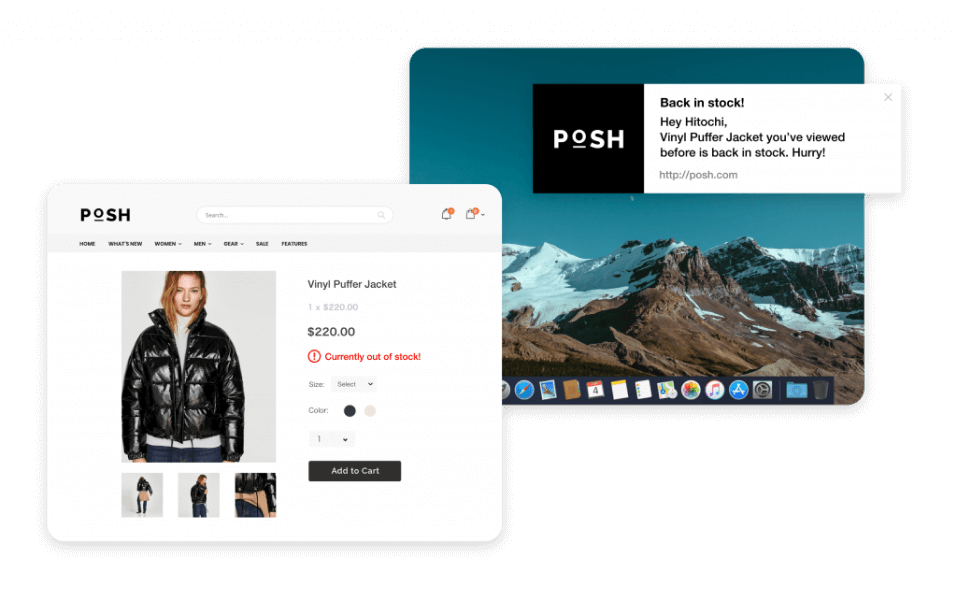
Success Story: Learn how Carrefour achieved a 350% increase in conversions with web push notifications for cart abandonment.
For detailed information on best web-push practices, make sure to check our latest blog.
Do you know what stands out? A great story.
There is a reason why Instagram stories are extremely popular and 500 million users engage with Instagram Stories every day. It is popularly referred to as the “interactive-engagement”. 59% of brands on Instagram link their stories to a shoppable page. Users are also more likely to engage with these stories. What if you could leverage the power of stories on your website?
With InStory you can build your brand’s story into your website—inviting users to engage with top-trending products, latest arrivals, discounted products, etc.
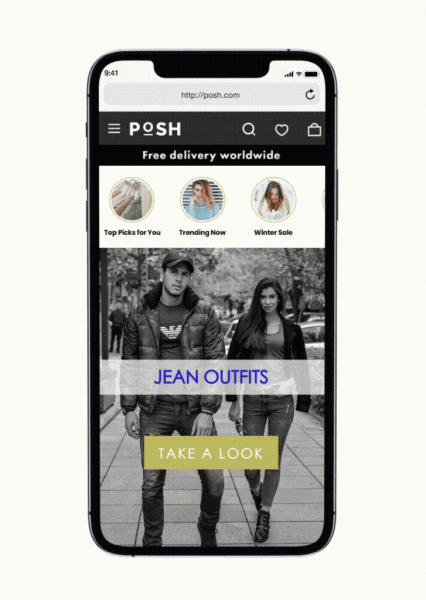
Brand stories on your website are a great and proven way to grab the attention of your visitors, engage them and retain them on your website, leading to potential conversions. But more than merely retaining visitors, InStory is a great way to deliver immersive experiences on the website.
Visitors come to your website and that is a desirable thing, but some of them may drop-off, for a variety of reasons, and that is not so desirable.
Retaining your visitors is vital to the success of your website. And while you may not be able to identify the exact reason why visitors may leave your website, there are certain steps you can take to entice them to stay. An exit-intent overlay is a proven and effective tool to retain visitors.
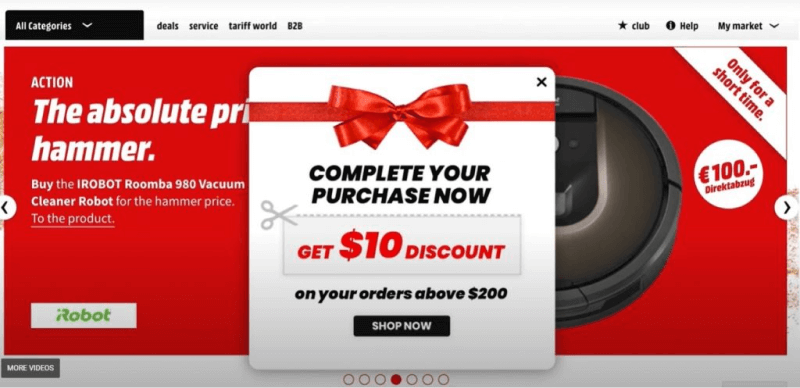
Check out our success story with MediaMarkt and see how they achieved a 9.3% uplift in conversion rate by using exit-intent overlays.
The use of exit-intents are not limited to conversion. They can also help with your lead gen efforts. See how Lexus achieved a 64% improvement in lead generation by using personalized exit intent overlays.
Optimizing your customer lifetime value is all about building a relationship with your customers—and relationships are a two-way street. Customers want to feel valued, know that they are heard and their opinions matter.
This is why it is important to ask for feedback—nobody wants to only hear from brands without being able to tell brands what they are looking for. If you want your customers to listen to what you have to say then you must be willing to hear what they have to say. It’s a relationship and it requires a two-way communication.
Having a feedback feature in your customer lifetime value optimization doesn’t mean you have to go all out and write letters to customers asking about their experience or invite them to reply. Feedback is often subtle and the simpler the better.
A simple way to go about this is to implement a feedback overlay on your website. It can be a one-step action such as a 5-star rating or a set of quick questions. Whatever you decide to go with, customers value brands who listen to them.
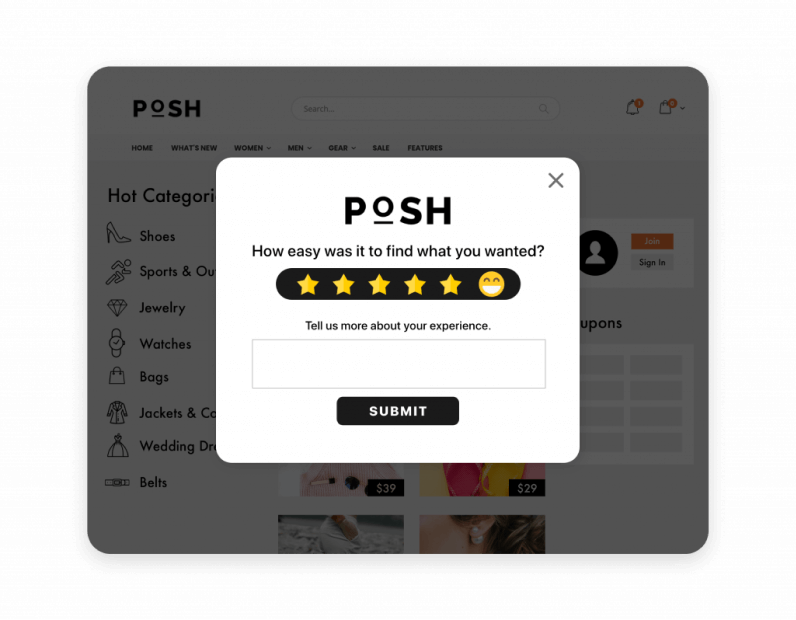
Ever wondered if you could optimize your ad-spend? Squeeze our more efficiency? What if you could target the right kind of audiences, instead of blindly targeting users and inflating your ad budget?
It’s possible with Insider’s Advertising technology that helps you target the right audience and improve your Returns On Ad Spend (ROAS). Retargeted visitors are 43 times more likely to convert and retargeted ads perform 10X better than normal ads.
When building out your Customer Lifetime Value strategy, you must take care to focus your ad strategy on targeting the right audiences. With predictive segments, you can maximize your margins and create relevant online experiences for customers by delivering relevant ads to users who are most likely to convert in the next 7 days. Or, target only those users with high discount-affinity with discount messages/offers. The bottom line is this—relevance. And relevance goes a long way in optimizing your customer lifetime value.
While we’ve looked at some of the popular tools you can employ to optimize your CLV strategy, you must keep in mind that your options do not end here.
Your CLV strategy is like your relationship—you can seek and receive relationship advice but in the end, nobody knows the dynamics of your relationship better than you. Which is why it is important for you to spend time and money into personalizing your CLV strategy—not only in terms of the tools that you will use or the automation involved but more around identifying and relating with your customer-base. Understanding the various segments of customers who engage with your brand and building a plan to cater to each customer in a truly unique way.
It is also important to remember that the various tools and technologies out there can only help you execute a strategy. But the strategy must be yours and it must be aligned to engage with your customers. Otherwise even the most advanced tools will fall short.
Customer Acquisition and Customer Retention are often seen as mutually exclusive—most companies favor one over the other. But a successful customer lifetime value strategy will have a perfect blend of both—where acquisition and retention complement each other.
Just remember, regardless of the technology you use or the strategy that you’ve adopted, ensure your focus revolves around customer experience, customer retention, re-targeting, simplified product discovery, feedback, customer loyalty and any other value-add that you can give your customers.
Good luck with optimizing your CLV strategy.
Subscribe to our blog to get the latest updates as we dive deeper into Customer Lifetime Value and how you can benefit from it.

Written by
Chris Baldwin
Chris is an award-winning marketing leader with more than 12 years experience in the marketing and customer experience space. As VP of Marketing, Brand and Communications, Chris is responsible for Insider's brand strategy, and overseeing the global marketing team. Fun fact: Chris recently attended a clay-making workshop to make his own coffee cup…let's just say that he shouldn't give up the day job just yet.